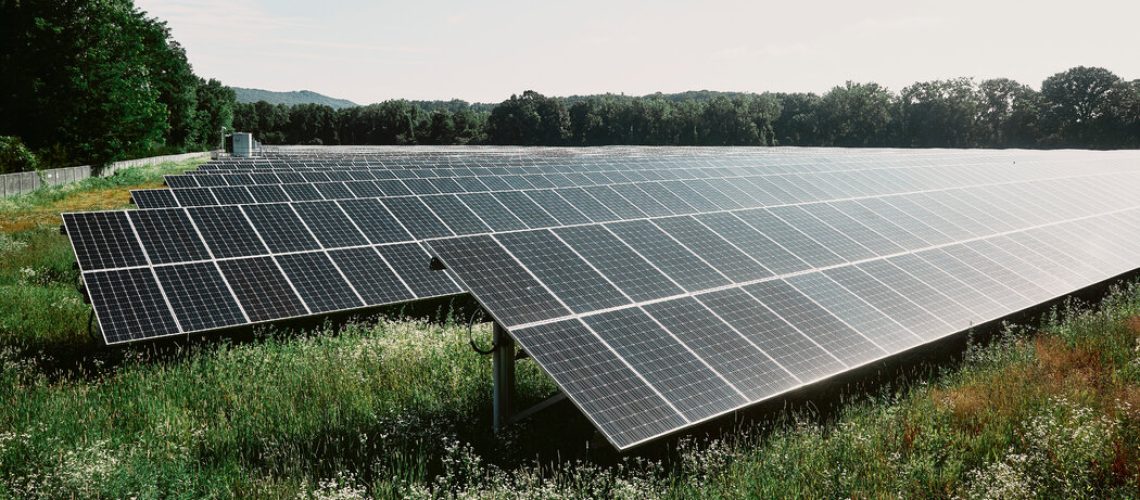Solar developers, environmentalists, farming groups and tribal organizations said on Thursday that they had reached an agreement that could make it easier in the United States to build large solar farms, which have attracted stiff opposition in some places.
The agreement seeks to address some thorny land-use and biodiversity issues that often stymie power projects in which developers propose installing large arrays of solar panels. The deal is the result of months of discussions organized by the Stanford Woods Institute for the Environment, the Solar Energy Industries Association and the Nature Conservancy.
Various groups have opposed large solar projects, arguing that they take up land that is sacred to tribes or is home to threatened plants or animals. Some people have also opposed solar farms for aesthetic reasons, arguing that they ruin their view or the pastoral nature of their communities.
Participants in the talks that produced the agreement said it would give project developers and potential opponents a framework — focusing on greater public participation early in the siting process — to resolve concerns without resorting to legal and political fights. That, in turn, would help accelerate the use of solar energy and fight climate change.
“These battles breaking out all over the country are not good for parties on any side,” said Dan Reicher, an energy scholar at the Woods Institute who started the talks. “The good news is that they have decided to lay down their swords and try something new.”
While the agreement includes representatives from various groups that have opposed solar projects, it does not include the fossil fuel industry or conservatives who have sought to slow or stop the use of renewable energy. It is also not clear how much sway the agreement will have on local groups that oppose projects in their communities.
Still, Abigail Ross Hopper, the president and chief executive of the solar association, said the agreement would help developers and environmental and local groups resolve their differences more quickly. Her group, the industry’s largest trade association, estimates that the United States needs to increase the share of its electricity that comes from the sun to 30 percent by 2030, up from 5 percent now.
“We are seeing that rural America has some concerns about where those projects are sited and how those projects are sited,” Ms. Hopper said.
More rooftop solar panels, which tend to face less opposition, would help meet some of the electricity demand. But a 2021 study by the National Renewable Energy Laboratory concluded that solar panels placed on homes and businesses could meet only up to 20 percent of the total. The rest would have to come from larger projects that take up more land. By some estimates, the number of solar panels needed just in the United States could fill a space as large as the land mass of Massachusetts and Connecticut combined.
The agreement was the result of talks that began almost two years ago. Mr. Reicher and Ms. Hopper organized meetings with groups that included solar developers, the Nature Conservancy, the Association of Fish and Wildlife Agencies, the American Farmland Trust, the North American Indian Center of Boston and WE ACT for Environmental Justice.
Energy Secretary Jennifer M. Granholm participated in some of the discussions, though the federal government did not formally join the agreement. Ms. Granholm said the effort “helps set us on the path to not only achieve President Biden’s ambitious goals of 100 percent clean electricity by 2035 and conserve at least 30 percent of America’s lands and waters by 2030, but to do it right.”
The groups involved in the agreement pointed to a solar project on the site of a former coal mine in Kentucky as an example of the approach they hope to achieve across the country. Once completed, that project, called Starfire, will have the capacity to provide enough energy to meet the needs of 170,000 homes a year.
The electric truck maker Rivian is a partner in that project, which it hopes will help offset some of the energy used by the pickups and other vehicles it sells. The company worked with the Nature Conservancy and BrightNight, the developer. They settled on Starfire’s location after reviewing about 100 others, determining that by choosing a former coal mine the companies could avoid building on land that might be better used for other purposes like farming.
“What we are seeing here is a maturation in this conversation, away from that story of a clean energy versus the green community and conservation,” said Jessica Wilkinson, who leads the renewable energy team for North America at the Nature Conservancy. “Not every project is going to be a good project. We recognize there are going to be trade-offs. But there are projects that really can reduce conflict and go faster.”



